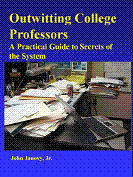Papers in the Biological Sciences

John J. Janovy, Jr. Publications
Document Type
Article
Date of this Version
10-1993
Abstract
The exogenous developmental niche spaces of Gregarina cuneata and Gregarina polymorpha, parasites restricted to larval Tenebrio molitor, and Gregarina niphandrodes, a parasite restricted to adult T. molitor, were determined along temperature and humidity axes and associated with parasite niche space on the host resource axis. Gregarine gametocysts were incubated at controlled humidity (0, 10, and 20 mm Hg vapor pressure deficit) at 20, 25, 30, and 35 C to determine the environmental limits to survival and sporulation. Although the environmental conditions that permit gametocyst development overlap, the gregarine parasite restricted to adult T. molitor utilizes a subset of sporulation and survival conditions that is incompatible with the developmental needs ofthe gregarines restricted to larval T. molitor. Likewise, the gregarine parasites that are restricted to larval T. molitor survive and sporulate under a subset of environmental conditions that are incompatible with the developmental needs of the gregarine restricted to adult T. molitor. Gregarina niphandrodes survived and sporulated under extended environmental conditions characterized by lower humidity and temperature. In contrast, G. cuneata and G. polymorpha survived and sporulated under extended environmental conditions at the upper end of the temperature scale. The pattern of interspecific variation in the environmental tolerances of the exogenous gregarine stages is analogous to the pattern of interspecific variation in host stadium specificity observed in the corresponding endogenous gregarine stages.


Comments
Published in the Journal of Parasitology (October 1993) 79(5): 701-709. Copyright 1993, the American Society of Parasitologists. Used by permission.